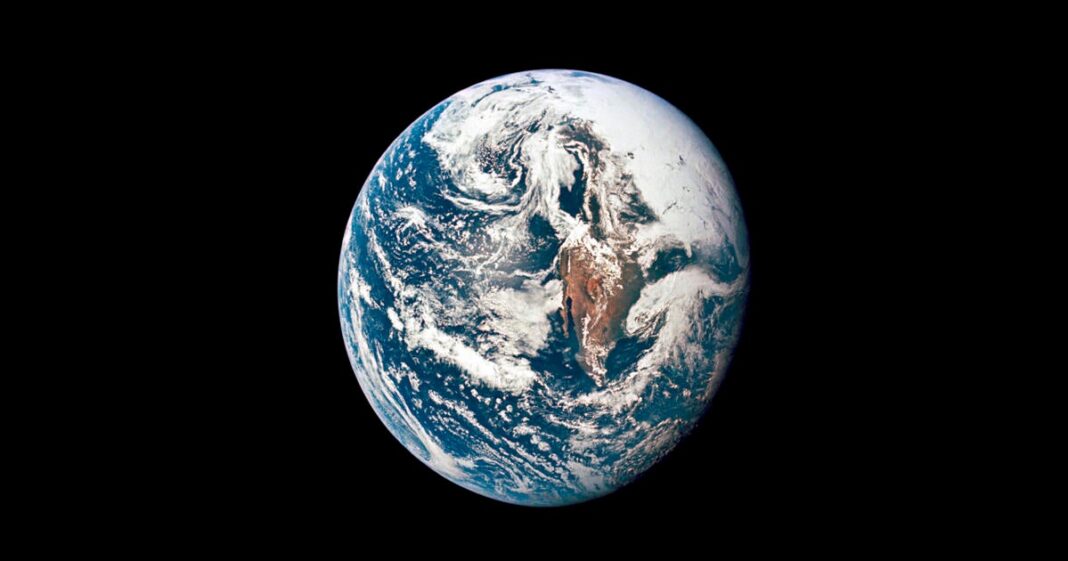An asteroid capable of flattening a mid-sized city could potentially collide with Earth eight years from now, as its orbit around the sun briefly intersects the path of our planet. Named 2024 YR4, the space rock carries with it very slim odds of striking land — either on Earth or, even less likely, the moon — and astronomers have so far set the probability of a crash at around 2%.
International space organizations like NASA are taking the possible threat seriously, however small it might be. Richard Moissl, the head of the European Space Agency’s planetary defense office, said their attentiveness shouldn’t unduly raise public concern. He shared key facts about the asteroid with CBS News during the below conversation, which has been edited for clarity.
When would the asteroid hit Earth?
This asteroid passes us by every four years. Every time we go four times around the sun, it has almost precisely completed one turn. It has just recently had a flyby in December 2024, which means the next flyby is in December 2028, and we know already that this one is no problem.
The critical one is in 2032, on the 22nd of December, somewhere around the middle of the day in Universal Time. That is when the asteroid is passing, really, through a part of the orbit of the Earth. So, it’s really going through the path of Earth, so to speak.
And the question is, whether Earth will be there at this point in time, or whether it will have already passed or is still approaching that point. It’s the question, where will it pass by? There’s an uncertainty region that spans, right now, the entire Earth-Moon system — which is not to say that we don’t know a lot about it. In fact, we know a lot about it.
Now, we’re looking at a closing moment in time on the 22nd of December, 2032, and the question is about fractions of a meter per second, which will make all the difference.
There’s about a 20-something-minute window in which the Earth can be in the way of this before it’s no longer in the path of the asteroid, or the asteroid cannot come in contact with the Earth anymore.
How is the asteroid risk being managed?
Until recently, we did daily measurements with different telescopes. Then, we had to pause a little bit for one or two days because of the full moon, and the object being too close to the full moon, and the moon illuminating the sky too much to see it.
From now on, we will not monitor it daily, but it will be constantly monitored in the best way possible, with ever larger telescopes. And the idea is to measure its path around the sun in ever higher positions, so you will see this uncertainty region shrink, and shrink, and shrink. And we are trying to constrain the uncertainty so much that we can say whether it passes by Earth safely, or whether there is still some chance left in the middle of April.
What happens in April?
We will be so far away from the object that we cannot observe it from Earth anymore. And then, the James Webb Telescope will take measurements. It will actually take one in March, primarily infrared observations that give us more insight about the size of the object, and then one more in May to do additional measurements. The most likely scenario is that, by that time, you will be able to say, look, we can prove it’s not going to hit Earth, but there is a chance that we cannot eliminate it completely. And that will be the more interesting bit, because then we have to wait until mid-2028, when we can observe it again. We will not let that time pass by without action.
When was the last time an asteroid had similar odds of hitting Earth?
This is only the second time that impact prediction systems have rated any asteroid with an impact probability of more than 1%. The last time was about 20 years ago, with the asteroid Apophis in 2004, which reached a couple of percent for a brief period in time before the uncertainty region could be constrained.
That shows how unusual 1% is, and that means that we, as experts, have to take this seriously. However, with the current probability estimated at around 2%, it’s still around 98% likely that nothing bad will happen at all. So, that needs to be kept in mind all the time. This is something that merits attention, but it’s not perceived as an imminent threat. It’s just, we need to find out more about it.
Have asteroids this size actually crashed into Earth?
We are aware of a recent example in history where this has happened. It was 1908 in Siberia. There was an event where 2,000 square kilometers of forest had been flattened by a big explosion, high up in the atmosphere. And this is very consistent with a body about 50 meters in diameter, plus or minus 10 meters, entering Earth’s atmosphere.
The body itself was, then, likely not a solid piece of rock. It was more like, what we call a pile of smaller pieces of rock. And this burst several kilometers above the surface and had this effect, that 2,000 square kilometers of forest was flattened, that seismic waves went out from this and could be detected far away, that people witnessed this event, also from very far away.
We don’t know if anyone was hurt in that accident. Nothing is reported. But the size, the footprint of the destruction is comparable to a major urban area, or a big city on Earth. So, this is basically the scenario that we would expect from this.
Another example not recorded in human history was an object believed to have been about 50 meters in diameter, a massive chunk of iron that formed the Barringer meteor crater in Arizona. It’s a 1.2-kilometer crater. If you look at this and think about it, if that were to hit in a city, the city would look very, very different afterward.
The estimated size of this asteroid ranges from about 40 to 90 meters. Wouldn’t there also be a big difference between the damage caused by something 40 meters wide versus 90 meters?
Absolutely. I mean, the 40 to 90 meters is a standard estimate, because we cannot know at this point in time what the surface brightness is. Current data indicate it’s more toward the 40- or 50-meter size. So, luckily, on the smaller size range, which is why I cited these popular examples for this.
But, indeed, size matters for asteroids. Size matters a lot. If we’re talking about the doubling of the radius of an asteroid, that means eight times the mass, eight times the energy, and that is a significant difference, of course. While on the lower end of the scale, with about 40 meters, it would be threatening to, let’s say, a middle-sized city, on the 90-meter edge, it might be comparable to the biggest urban areas.
Why has the probability of 2024 YR4 hitting Earth increased since it was first discovered?
The good news is, this increase does not mean that the asteroid has become more dangerous. The path of the asteroid is defined by physical laws. It’s already clear. It’s just our knowledge of where that path would be, in reality, is not perfect yet.
The percentage can be compared to the size of the uncertainty area, compared with the size of the Earth. If you look at the fraction, the size of the Earth — which is inside the uncertainty area — is compared to the entire area of the uncertainty of where the asteroid could be in that critical moment in time. This equated to about 1% when we reached this threshold for international awareness.
Since then, the size of the uncertainty region has basically shrunk by half. And the size of Earth, luckily, remains the same. So, that means Earth is now occupying twice the amount of space in the uncertainty region. And it means our estimate for the impact risk has risen from 1% to 2%. It doesn’t mean that anything has changed.
Again, 2% is a 98% chance of missing. So what will happen is, with our gaining knowledge, uncertainty will shrink further and further and further, and the expected case is that we will manage to shrink it so much that Earth is no longer inside this uncertainty region, and then the impact probability will drop to zero.
In the case of this being a close flyby to Earth, if it’s reasonably close, it’s entirely possible that the impact probability will continue to rise a little bit on a modest path. This is still no cause for alarm.
The asteroid has been assigned a Level 3 ranking, out of 10, on the Torino Impact Hazard Scale. How uncommon is that?
It’s the first time ever that an object is officially classified as a Level 3 on the Torino scale. The only other object that was ever classified with a level higher than 1 was Apophis. Because of its larger size, Apophis has been classified as a 4 on the Torino scale, which is really just indicating that it’s a larger object. [Apophis has an estimated diameter of 350 meters, which is much larger than the asteroid 2024 YR4.]
What else should people know?
Well, the most important thing is, don’t panic. Always good advice, but it’s definitely applicable advice in this situation. I think this gives us a chance to prove that we, as a planet, can still rise above things on Earth that are between people, between countries, between parts of Earth. That if we are facing a completely outside threat, that we can all come together, join forces and face these kinds of threats together.
This one is a manageable challenge. Even if it were to be headed towards Earth, which is by no means certain, 98% it’s clear that it will miss us. So, not much to be afraid of, but a good chance to show that we can stand united on this planet.


